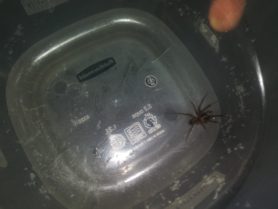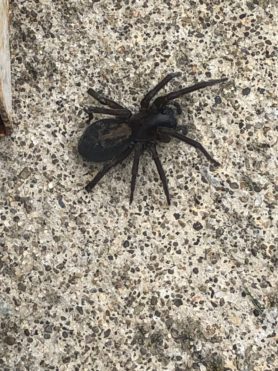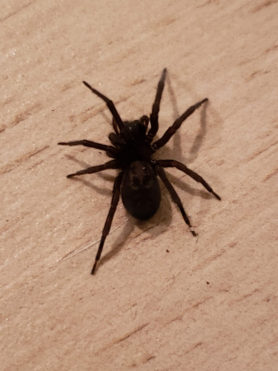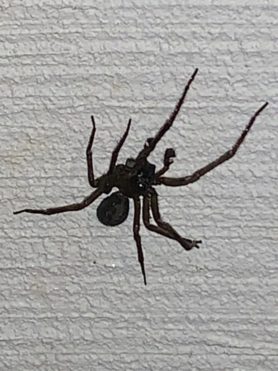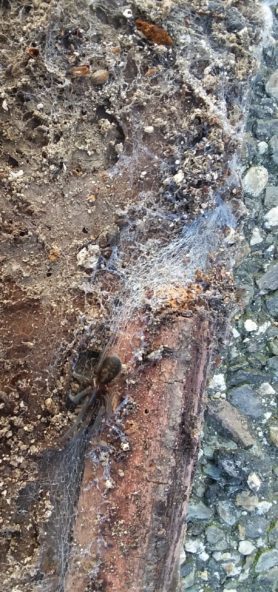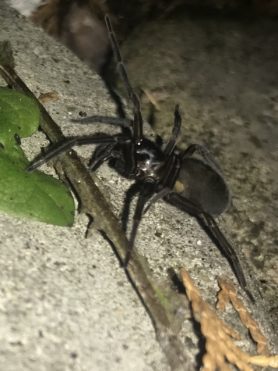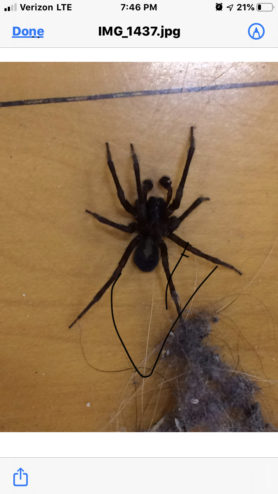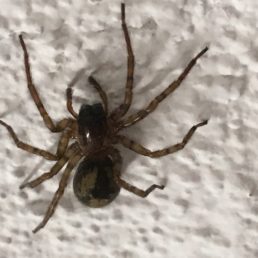Taxonomic Hierarchy
- Kingdom: Animalia
- Phylum: Arthropoda
- Class: Arachnida
- Order: Araneae
- Suborder: Araneomorphae
- Family: Amaurobiidae
- Genus: Amaurobius
- Species: Amaurobius ferox
Other Common Names
Black Lace-weaver, Black Laceweaver
Author
Charles Athanase Walckenaer, 1830
Primary Colors
Sightings Overview
There have been 125 confirmed sightings of Amaurobius ferox (Black Lace-Weaver), with the most recent sighting submitted on April 19, 2020 by Spider ID member mikelivy. The detailed statistics below may not utilize the complete dataset of 125 sightings because of certain Amaurobius ferox sightings reporting incomplete data.
- Web: 10% of the time, Amaurobius ferox spiders are sighted in a spider web (Sample size: 125)
- Sex: 8 female and 67 male.
- Environment: Amaurobius ferox has been sighted 34 times outdoors, and 100 times indoors.
- Outdoors: Man-made structure (14). Ground layer (8). Under rock or debris (10). Forest (1). Cave (1).
Location and Range
Amaurobius ferox (Black Lace-Weaver) has been sighted in the following countries: Canada, Ireland, United Kingdom, United States.
Amaurobius ferox has also been sighted in the following states: Connecticut, Illinois, Indiana, Maryland, Massachusetts, Michigan, New Hampshire, New Jersey, New York, North Carolina, Ohio, Pennsylvania, Virginia, West Virginia, Wisconsin.
Seasonality
Amaurobius ferox has been primarily sighted during the month of April.
- January: 4
- February: 13
- March: 24
- April: 37
- May: 36
- June: 3
- July:
- August: 1
- September: 1
- October: 2
- November: 3
- December: 1
Additional Remarks
- Spider is overall dark in coloration; brownish-red or nearly black. The abdomen has pale markings in a unique pattern that is often likened to a ghoulish mask or skull. It may be faded or difficult to see in some specimens.
- Adult males are often found indoors in the spring as they wander for mates, but adult females can probably be found at any time of year.
- Egg sac is lens-shaped, about 7-15mm in diameter, with anywhere from 60-180 eggs inside.
- This species is matriphagous, which means the mother sacrifices herself as food for her spiderlings.
- Spider is considered “subsocial” because, after cannibalizing their mother, the spiderlings remain together and feed communally for about a month.
- Cloudsley-Thompson (1955) mentions that, in England, this species is sometimes called the “Old Churchman” because it can be seen scurrying around on the walls and pews of old churches before rain storms.
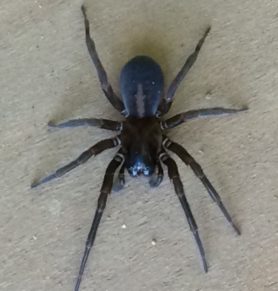 The spider species Amaurobius ferox, commonly known as Black Lace-Weaver, belongs to the genus Amaurobius, in the family Amaurobiidae. Amaurobius ferox spiders have been sighted
The spider species Amaurobius ferox, commonly known as Black Lace-Weaver, belongs to the genus Amaurobius, in the family Amaurobiidae. Amaurobius ferox spiders have been sighted 